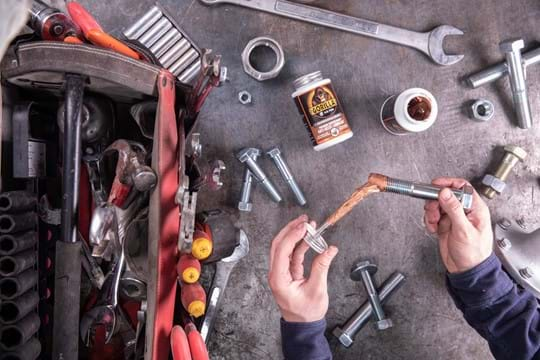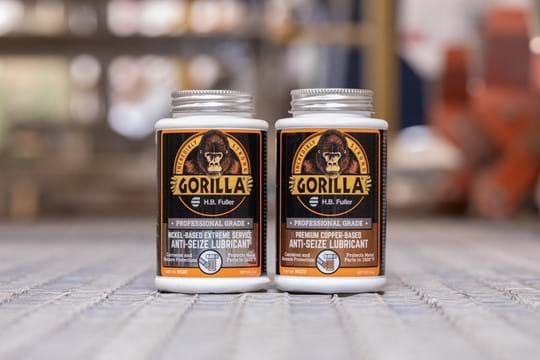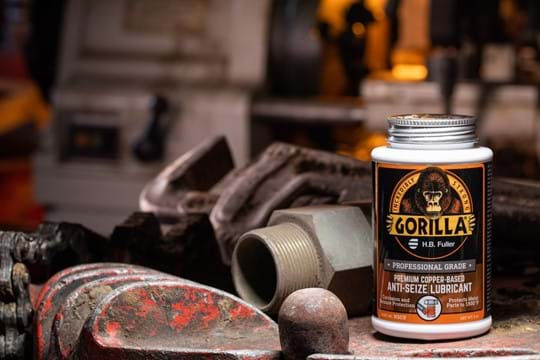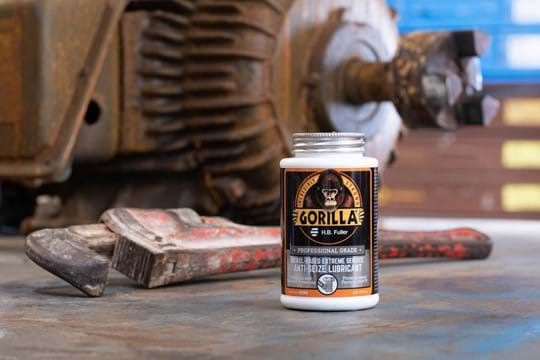How to Determine Which Anti-Seize Compound to Use

There are multiple preventative maintenance measures you can take to give you peace of mind when using fasteners or metal interfaces, one of which is implementing an anti-seize compound.
In this article, you’ll learn about anti-seize compounds, including the benefits of their utilization, nickel vs. copper anti-seize lubricants and when to use each.
What Are Anti-Seize Compounds?
Anti-seize compounds are applied to your bolts, flanges, fasteners and other metal interfaces in order to prevent galling, seizing and corrosion. They also assist in lubricating to ease disassembly. Anti-seize compounds can come in the form of pastes, greases and coatings, and can be based on a wide range of materials, such as copper and nickel, to suit particular systems.
Anti-seize is typically used on bolted joints that experience high-temperature environments and require future maintenance. It is a perfect solution for proactive maintenance to help you prevent any costly unplanned downtime at your place of operations.
It is challenging enough to keep up with maintenance activities while keeping teams and operations trained, equipment operating at capacity, and driving productivity forward, so having preventative maintenance measures in place can save you a great deal of hassle.

What Are the Benefits of Anti-Seize Compounds?
There are multiple preventative benefits to utilizing anti-seize compounds, such as:
- To prevent galling of fasteners during assembly
- To allow for easy dismantling and damage prevention to components during disassembly
- Reducing corrosion and rust of interfaces by preventing water ingress and chemical attack in hot environments
- Reducing friction on stainless steel threads and press fits
- To offer protection from acids, ammonia, acetylene and more
- For use when dissimilar metals are involved (i.e. steel bolt into an aluminum brake caliper)
Anti-seize compounds lubricate and seal threads with their handy brush-top applicators, which reduces wear and loosening. They also maintain proper clamping force, offering controlled torque for removal of the assembly.
Choosing the most correct anti-seize compound for you and your needs is going to be application dependent. When looking for an anti-seize compound, you need to ask yourself some questions:
- What is the application?
- What environment is this going to be in?
- Are there any alkalis, chemicals or acids that may come in contact with my anti-seize compound?
- What’s the hottest temperature this joint will reach?
- Will carbon residue be an issue?
- How much protection do I need?
- What types of metals are involved?
What Types of Anti-Seize Compounds Are There?
GorillaPro® anti-seize compounds come in two forms: copper-based and nickel-based. They are highly refined, heavy-duty, high-temperature lubricants that provide a barrier between metal surfaces to prevent galling, seizure and corrosion in extremely stressful environments.

Copper-Based Anti-Seize Lubricant
GorillaPro Premium Copper-Based Anti-Seize Lubricant is designed as a high heat-resistant carrier fortified with rust and corrosion inhibitors and antioxidants. It is highly resistant to saltwater corrosion and galvanic corrosion and will greatly reduce maintenance challenges caused by parts seizing and rusting together.
Composed of pure copper and large flake graphite, it can lubricate and protect threaded connections and flanges at temperatures of up to 1800 degrees Fahrenheit (982 degrees Celsius) and can perform under extreme load pressure conditions.
Its applications are suited for general purpose use for assemblies such as brake caliper bleed plugs, pipeline fasteners, spark plugs, conveyor bushings, wenches, keyways, gears and more. It is versatile as it is compatible with all types of metals.

Nickel-Based Anti-Seize Lubricant
GorillaPro Nickel-Based Extreme Service Anti-Seize Lubricant is designed for maximum resistance to the most acidic, caustic, corrosive and extreme temperature environments. The lubricant performs to temperatures up to 2600 degrees Fahrenheit (1426 degrees Celsius).
Its applications are suited for extreme service conditions, such as furnaces, high-pressure flange bolts, crane gears, chemical tanks and refinery pipeline fasteners. It eliminates seizing and galling, reduces friction and lowers torque, and provides nickel plating as a barrier between metal surfaces.

Want to learn more? Or interested in these products for yourself? Check out our Professional Grade Anti-Seize Lubricant product line or learn where you can buy them.